Book of Revelation – a series presented by pastor Michael Walker
Lesson #5 – Revelation, chapter 6
The Prophecies in Revelation are repetitive rather than in successive order. This principle was even recognized by Victorinus, who was martyred in AD 303 during the Diocletian persecutions. He wrote a complete commentary on the Book of Revelation in which he emphasizes the vital, fundamental principle of repetition in its prophecies.
It is essential to understand that the same historical periods outlined in the 7 Churches is also covered in the 7 Seals and the 7 Trumpets. But from Chapter 6 onwards, the drama is seen to unfold within the setting of the heavenly courtroom – i.e. during the Judgement period. Here Christ, our Heavenly High Priest and Goel, steps forward as “The Lion of the Tribe of Judah” and “The Lamb” (Revelation 5:5-7) and opens the seals. As He does so, there unfolds a panoramic portrayal of the history of the ages. The 7 seals must surely reveal what is recorded in the scroll.
The 1st Seal: Apostolic Age (AD 31-100)
vs. 1-2
The White horse symbolizes the purity and victory of the Early Church. With the bow, it went forward in conquest, as the Church Militant, indicating the triumph and advancement of the Christian message. The rider’s crown [Greek: stephanos]- i.e. a garland of victory. It is the scene of triumph over paganism for the gospel of Christ!
“After the Lord ascended into heaven and opened all things, He sent the Holy Spirit, whose words the preachers sent forth as arrows reaching the human heart, that they might overcome unbelief… Therefore the white horse is the word of preaching with the Holy Spirit sent into the world” Victorinus’s Commentary. [His commentary is still extant]
The Gospel of Christ was preached in all the world (c.f. Colossians 1:23; Romans 1:8). The historian Edward Gibbon declared that within a century of the death of Christ, Christians in Rome numbered not less than 50,000; and in Antioch 100,000; and estimated there were 5,000,000 in the empire.
“The progress of Christianity was not confined to the Roman Empire … the new religion, within a century after the death of its divine Author, had already visited every part of the globe” – Edward Gibbon, History of the Decline and Fall of the Roman Empire, ch. 15, par. 54.
The 2nd Seal: Period of Persecution and Corruption of Pure Faith (AD 100-313)
vs. 3-4
The Red horse symbolized bloodshed and also corruption due to heresies. “Great sword” and taking “peace from the earth” portrays the violent persecution under the Roman Caesars endured by faithful Christians. This corresponds with the period represented by the Church of Smyrna (Revelation 2:8-11) when Satan sought to destroy the Church of Christ. When the church was attacked from without, it grew; but when it was attacked from within, it waned! The apostles warned the church that heresies would come in: (c.f. Acts 20:28-30; 2 Thessalonians 2:3-7; 2 Peter 2:1-3).

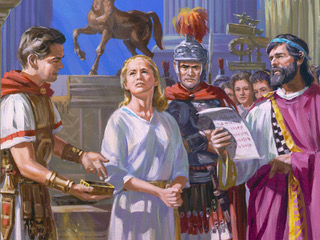
“The fiery colour of the second horse … And of the dreadful weapon with which he was armed, indicate to us, that, after the first and purest age of Christianity, the spirit of love and peace should recede from the visible church, and be succeeded by a spirit of discord, or dissension and controversy, a fierce and fiery zeal, instigating Christians to destroy one another. The ecclesiastical history of the fourth and fifth centuries, sufficiently evinces, that such a change did take place” – W. Cunninghame, A Dissertation on the Seals and Trumpets of the Apocalypse, 4th ed., p. 5.
The 3rd Seal: Period of Apostasy (4th-6th centuries)
vs. 5-6
The Black horse symbolizing the once pure church now fallen into its corrupt and sinful state. It was now subjected to the powers of darkness. Pagan rites were gradually introduced into the church under the union of church and state. It was Edward Gibbon who remarked that paganism disappeared only to emerge again in the church.
“As the stream of Christianity flowed farther from its fountain, it became more and more corrupt, and as the centuries advanced, superstition advanced with them; and … Tales of purgatory, and pious frauds, and the worship of saints, relics, and images, took the place of pure and simple Christianity: till at length, the Book of God being laid aside for legendary tales, and ‘the traditions of men,’ all these corruptions were collected into a regular system of superstition and oppression” – J. C. Woodhouse, The Apocalypse, p. 146.
“An enormous train of different superstitions were gradually substituted in the place of true religion and genuine piety. This odious revolution was owing to a variety of causes …. A preposterous desire of imitating the pagan rites, and of blending them with the Christian worship, and that idle propensity which the generality of mankind have toward a gaudy and ostentatious religion, all contributed to establish the reign of superstition upon the ruins of Christianity …. The public processions and supplications by which the pagans endeavored to appease their gods were now adopted into the Christian worship and celebrated in many places with great pomp and magnificence” – J. L. Mosheim, Institutes of Ecclesiastical History, book 2, cent. 4, pt 2, ch. 3.
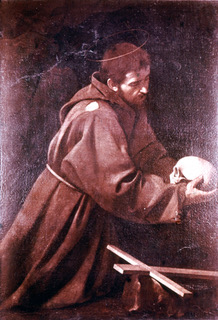
v. 5
“A pair of balances” indicating the united religious and civil power under one head – namely the bishop of Rome who claimed judicial authority in both church and state.
v. 6
The Church focused on secular matters at the neglect of spiritual ones that resulted in spiritual starvation as they were deprived of the Bible! This situation is signified by “a quart” (choenix) – i.e. less than 1 quart for 1 penny. This was a scanty allowance for a day’s pay. Barley was considered a much cheaper grade of food than wheat; and so it was only eaten by the poorest. In normal times, a penny (denarius) was the ordinary wage for a full day’s work and would buy 24 measures of barley; but this was now reduced to only 3 measures, which was the amount allowed to a slave. These allowances were scarcely enough for the workman to feed himself, let alone to feed his family. As the Scriptures were virtually removed from the people, spiritual famine and starvation were rife.
Oil and wine symbolize the Holy Spirit and redemption in Christ, respectively; and Christ always ensured their availability to the faithful. These are commodities of heaven that no power on earth could withhold from those who remained true to God.
The 4th Seal: Dark Ages (538-1517)
vs. 7-8
The Pale green horse is symbolic of the sickly, anaemic state of the church that had been deprived of the “Sun of Righteousness” from dispelling the spiritual darkness of those days when the papacy ruled supremely. That light began to dispel the darkness when the Protestant Reformation began to emerge.
“Its riders name was Death” – significant of the controlling power of the ‘See of Rome’ as it controlled the lives and wrought spiritual starvation upon the nations under its jurisdiction. “A fourth of the earth” represents the vast area of Europe under the control of the Holy Roman Empire – Note in Daniel 7:21,25; 11:33 the pointers highlighted – e.g. warring against Christians, persecution, speaking words against God (blasphemous claims), claiming to change God’s times and the law.
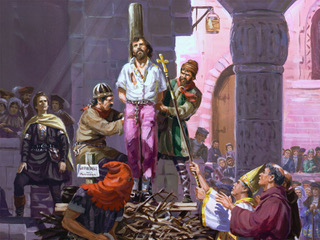
Millions were martyred for their faith by the Church of Rome during this period. It was J.A. Wylie who wrote:
“The noon of the papacy was the midnight of the world.”
J. A. Wylie, The History of Protestantism, vol. 1, p. 16.
Those awful and evil deeds are recorded in the Books of Heaven (c.f. Revelation 20:12-13) and those responsible are being held to account in the judgement (c.f. Daniel 7:10-11,26).
The 5th Seal: Protestant Reformation and Martyrdom (1517-1798)
vs. 9-11
The Altar represents the martyrs who were sacrificed for the cause of Christ. In the courtyard of the OT Sanctuary, was the Altar of Sacrifice where the blood of the sacrificial animals was poured out at its base. The blood of all the Christian martyrs is portrayed as crying out, ‘How much longer?’ before God intervenes in Judgement. “How long … before you judge and avenge our blood?” – the martyred saints are not crying out for revenge but it highlights the fact that one day soon, the wicked will suffer divine retribution! (c.f. Romans 12:19).
“A symbolical vision was exhibited, in which he saw an altar. And under it the souls of those who had been slain for the word of God – martyred for their attachment to Christianity – are represented as being newly slain as victims to idolatry and superstition. The altar is upon earth, not in heaven” – Dr. Adam Clarke.
v. 11
The white robe symbolizes the righteousness of Christ (Revelation 19:8). They are already recognized by Jesus as conquerors. This has been an encouraging facet for all those who have suffered for Christ’s sake as well as those of us who will pass through the coming ‘Time of Trouble’. Those who come through the “great tribulation” will also be clothed in white raiment (Revelation 7:13,14). Only “overcomers” will be clothed in the white raiment of Christ’s righteousness (Revelation 3:5). This white robe is the wedding garment that Jesus referred to in the parable (Matthew 22:11-14) when He spoke about the judgement.
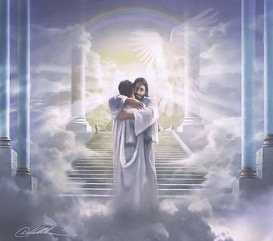
The 6th Seal: The Time of the End (1755 – Second Coming)
vs. 12-17
At this point, the symbolism changes to literal representation. This is distinctly clear because Jesus foretold these events when describing the ‘Signs of the Times’. Towards the end of the papal reign of supremacy (538-1798) there followed the following phenomena as identified in the 6th Seal and which Jesus foretold (Matthew 24:29; Mark 13:24-26):
The Great Lisbon Earthquake, Nov.1, 1755 – it’s epicenter was Lisbon, Portugal, in which up to 90,000 lives were destroyed. It was the most extensive and severe seismological disturbance ever recorded. Evidence of the quake can still be found in Eastern Europe, and it was felt as far away as Africa, Scandinavia, America and the Caribbean!
The ‘Dark Day’ of May 19, 1780 – a phenomena that was not caused by an eclipse and cannot be explained. Grosse darkness commenced at mid-day and was described as palpable.
The moon appeared as blood – May 19/20, 1780 – there has been no logical explanation.
The falling of the stars on November 12, 1833 – when stars appeared to be flung in every direction (just as unripe figs are flung when the tree is shaken) for several hours – estimated as high as 200,000 shooting stars an hour!
The 6th Seal also covers the ‘Time of Trouble’ that climaxes the final events just before Jesus returns. He said that “The powers of heaven will be shaken” – Matthew 24:29; and during that time God will manifest His power, during which the 7 Last Plagues will be poured out (Revelation 16).
v. 14
“Sky vanished like a scroll” – the atmospheric heavens will witness the rolling back of the clouds to reveal Christ’s return in glory. The great convulsions of earth will be caused by the 7th(Revelation 16:17-21). The wicked will be in terror while the saints rejoice in the return of Christ to deliver them (c.f. Isaiah 25:9).
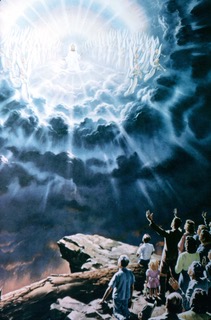
v. 17
The sequence of the 7 Seals is broken at this juncture to answer the soul-searching question, “Who is able to stand?”. That answer is given in Revelation 7:9; but it also reveals that God has a true people who will be “able to stand” during the ‘Time of Trouble’ and before Christ’s glorious presence when He returns!
The 7th Seal
Revelation 8:1
Silence in Heaven for about half an hour. Saints delivered.

The full video presentation is available below:


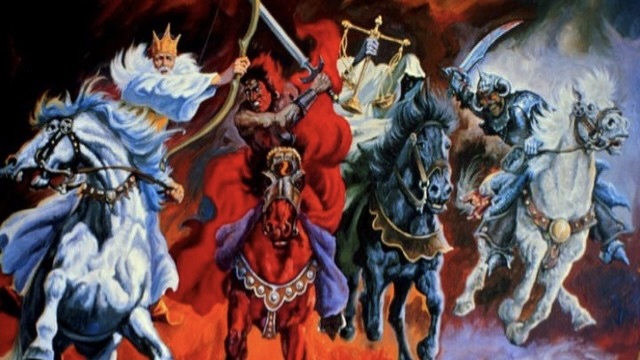

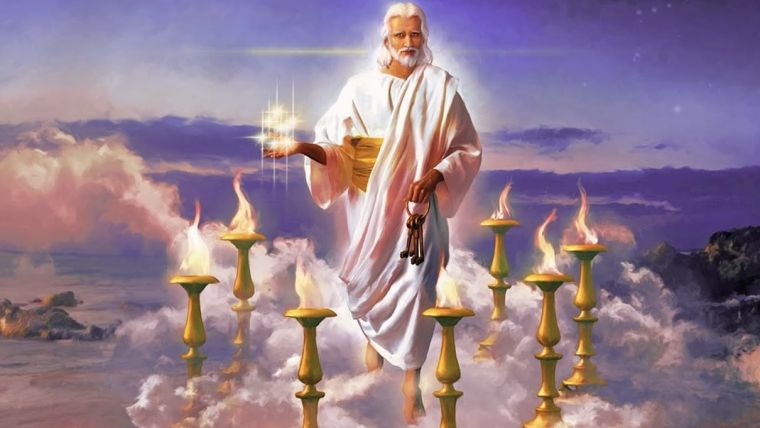
2 Comments
Miriam
Maybe you want to revise the date of the start of the 6th seal, not 1798, but 1755. You have the information correctly written under the 6th seal, but its start date is given as 1798. The Lisbon earthquake took place in 1755, this is under this seal, hence the 5th seal ends, and the 6th seal starts in 1755, not 1798.
Christian Salcianu
You are right. Edited now to 1755. Thank you